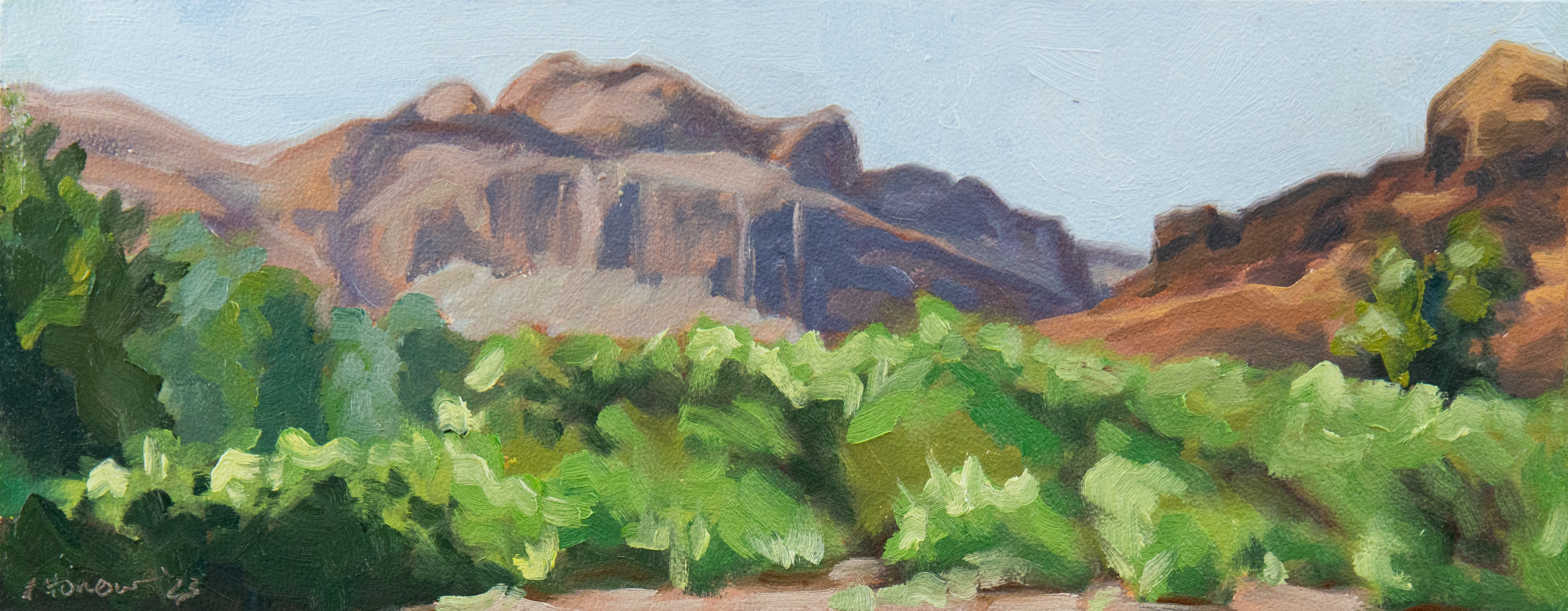
The next one is on the easel. It needs some more work on the sketch, but it’s a good start. I’m actually really happy with the mouth and left eye. The right eye and the nose especially, need more work. This painting is going to be my first color portrait of a person. I really loved the dog portraits I was doing this fall, so I thought some smaller portraits would help me hone my portrait skills.
I wanted to get more painting done this week, but my week was absolutely packed with festivities. Now that most of the hard partying is out-of-the-way, I can relax with my family for Christmas and sneak off to paint.
With Christmas approaching, I’ve been thinking about new brushes. I’ve been very hard on my brushes. Not intentionally of course, but I’ve practically destroyed several nice brushes I got for Christmas last year. I can’t for the life of me figure out where I’ve gone so wrong. Am I cleaning them wrong or am I just excessively hard on them while painting?
After every time I’m done painting I clean all of the paint out with turpentine, then wash thoroughly with soap and water and either lay them over the edge of the counter or hang bristles down to dry. Brush washing has become the bane of my existence this last year. I really wish I enjoyed washing my brushes, but there have been too many times that I avoided painting entirely because I didn’t want to wash brushes after.
When I feel unmotivated to wash brushes, I like to watch videos of other people painting. In a few videos I came across people who rarely wash their brushes. I went on to find many more people on blogs and forums that have claimed to do this successfully for years. They simply clean the paint out using turpentine or oil then dip them in a slow drying oil and they’re good to go for days. It’s recommended to wash brushes if they won’t be used for an extended period of time, but I paint every week so I would drastically reduce my brush washing with this method.
There is some debate over what oil to use and whether the oil will negatively affect the paint. It seems the top contenders are walnut oil, safflower oil, and poppy-seed oil. They’re all considered slow drying oils and have a long history of use in oil paint. However, it’s debatable whether supermarket oils are lesser than art store oils. It was suggested that rancid supermarket oil could be better for painting because the antioxidants have decomposed or that it shouldn’t be used because of preservatives (wouldn’t my paint contain rancid oil or harsh preservatives making this a moot point either way?). I had trouble finding a definitive answer on this point. Some people only used the oil for cleaning and believe it doesn’t matter because the oil will be washed out of the brushes before they’ll be used again for painting. I however wouldn’t be washing the oil out of my brushes the majority of the time so it needs to be compatible.
Does anyone have any experience with this method of caring for brushes? M. Graham offers both a walnut alkyd medium and a walnut oil medium which seems to just be plain walnut oil. Would the supermarket walnut oil be equivalent to their plain walnut oil and be acceptable to use for cleaning and short-term storage?
It’s also an intriguing idea to clean brushes with oil instead of turpentine. Like dissolves like, so I don’t see why it wouldn’t work. It’s hard to get adequate ventilation in the winter, and I would love to not freeze my butt off while cleaning brushes. If it works well enough I might even give up turpentine/OMS/mineral spirits entirely.


Leave a Reply